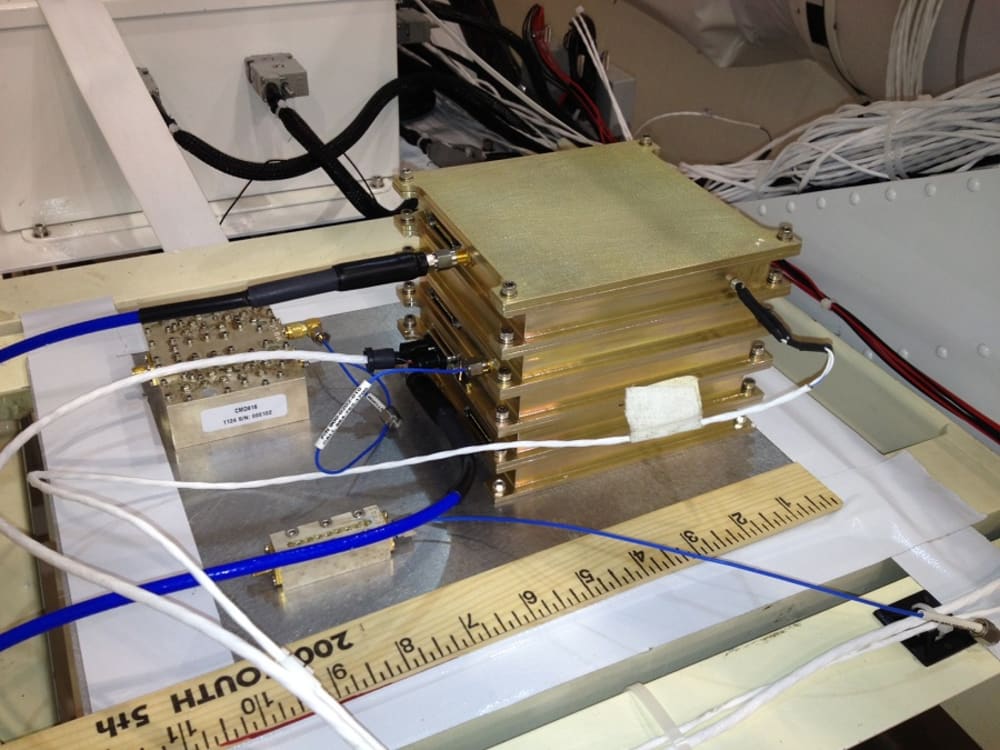
Software Defined Radio (SDR) technology has been proven in the commercial sector since the early 1990’s. Today’s rapid advancement in mobile telephone reliability and power management capabilities exemplifies the effectiveness of the SDR technology for the modern communications market. In contrast, transponder technology foundations presently qualified for satellite applications were developed during the 1960's space program. Conventional transponders are built to a specific platform and must be redesigned for every new bus while the SDR is adaptive in nature and can fit numerous applications with no hardware modifications. A SDR uses a minimum amount of analog / Radio Frequency (RF) components to up/down-convert the RF signal to/from a digital format. Once the signal is digitized, all processing is performed using hardware or software logic.
NASA Marshall Space Flight Center (MSFC) Programmable Ultra Lightweight System Adaptable Radio (PULSAR) leverages existing MSFC SDR designs and commercial sector enhanced capabilities to provide a path to a radiation tolerant SDR transponder. These innovations (1) reduce the cost of NASA Low Earth Orbit (LEO) and Deep Space standard transponders, (2) decrease power requirements, and (3) commensurately reduce volume. A second pay-off is the increased SDR flexibility by allowing the same hardware to implement multiple transponder types simply by altering hardware logic – no change of hardware is required - all of which will ultimately be accomplished in orbit. Development of SDR technology for space applications will provide a highly capable, low cost transponder to programs of all sizes.
The PULSAR base design has five selectable decks – power deck, processor deck, S-Band receiver deck, and S- and X-Band telemetry transmitter decks. Mission applications determine the final configuration, thus the number of decks. PULSAR operates electrically isolated from the satellite bus. The current PULSAR version requires an external power source providing an input range of +16 to +50 volts direct current (VDC). A newer version will distribute up to 30 watts depending on configuration stack up. The S-band receiver deck processes up to a maximum 300 kilobits per second (kbps) uplink data rate - based on ground station limitations; therefore the limit could increase as the ground station technology improves. The receiver deck demodulates binary phase-shift keying (BPSK), boasts a noise figure of 0.6 dB, and uses Doppler Shift ranging (instead of tone). The telemetry transmitter decks produce up to a 2 watt (W) radio frequency (RF) output (1W each). The RF output power tailors to many missions. If greater output power is desired, then PULSAR would utilize an external Solid State Power Amplifier (SSPA) to increase the output power to the desired level. The telemetry transmitter decks stream data with quadrature phase-shift keying (QPSK) at a maximum data rate of 150 Mega-samples per second (Msps). Just as in the receiver deck, the ground station limits the data rate. The transmitted data uses Low Density Parity Check (LDPC) Forward Error Correcting (FEC) coding. Exemplifying flexibility, PULSAR transmits using LDPC, Reed-Solomon (223/255), or convolutional (Rate ½) FEC based on mission requirements.
-
Awards
-
 2014 Top 100 Entries
2014 Top 100 Entries
Like this entry?
-
About the Entrant
- Name:Eric Eberly
- Type of entry:teamTeam members:Eric Eberly
Herb Sims
Kosta Varnavas - Software used for this entry:MatLab, ProE
- Patent status:pending





